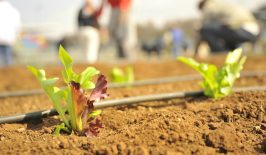Despite running the world’s largest child nutrition program, nearly half of India’s young are malnourished. Two thirds of Indian children are anemic, as well as vitamin A deficient and approximately one third are deficient in iron. Some believe that the answer to addressing this may lie in biofortification; the breeding of crops to increase their nutritional value.
Food prices for cereals and milk have by and large been decreasing over the past 40 years in India, although there has been a recent spike in milk prices as demand outweighs production, while prices for other food groups such as fruits, vegetables, lentils and animals products have steadily been rising. This has made it more difficult for the poor to have access to nutrient-rich food.
Hidden hunger, the chronic lack of vitamins and minerals in a diet, affects one in three people worldwide. It has no visible warning signs, yet its consequences include mental impairment, stunted growth, and poor health and productivity.
Howarth Bouis, the director of HarvestPlus of the International Food Policy Research Institute (IFPRI) in Washington DC, believes that India’s food security act should place less focus on cereals and aggregate calories, and pay more attention to non-staple foods rich in vitamins and minerals, as these account for the largest dietary differences between low-income and high-income groups.
HarvestPlus has been working in over 40 countries to breed micronutrient-rich staple food crops through a process called biofortification. To address a widespread vitamin A deficiency in many African nations, the program has introduced nutrient enriched orange sweet potatoes, orange corn and yellow cassava seeds.
The Indian government has in the past tried to introduce a vitamin A-rich rice variant which was developed with genes not originally found in rice. Concerned environmentalists protested the plantation of the crop and it is not likely to return to the fields within the near future. However there are also several staple crops, wheat, maize and millet varieties that are naturally more rich. Through selective breeding these may be fortified without employing genetic engineering.
HarvetPlus released such an iron-enriched pearl millet seed to farmers in Maharashtra last year. The biofortified millet can provide a third of the average iron needs of an adult woman, and may be consumed in the form of roti. Later this year they plan to disseminate high-zinc rice and wheat across South Asia.
The finance minister, Shri P. Chidambaram, announced in his budget speech that Rs.200 crore will be allocated to fund nutri-farm pilot projects in districts heavily burdened with malnutrition, an indication that policy makers are recognizing the importance and potential of biofortified crops to tackle hidden hunger.
According to numerous international reports, a cost-effective strategy to address India’s nutritional needs would need a two-pronged approach: promoting an increase in yields of certain crops; and, secondarily, raising their level of nutrients. The Indian agricultural ministry now aims to incorporate biofortification breeding technologies into the Food Security Mission it initiated five years ago. The Food Security Mission seeks to increase yields of crops such as rice and wheat, which have been stagnating for more than a decade.
According to IFPRI the success of these nutri-farms hinges on effective breeding, the retainment of nutrients after the food has been cooked and lastly farmers willingness to adopt them.
Author: Kirsten Zeller/ RESET editorial
Sources and links:
- Live Mint: livemint.com
- Hindustan Times: hindustantimes.com
- Indian Express: indiaexpress.com
- Invest India: investindia.com








